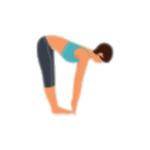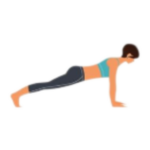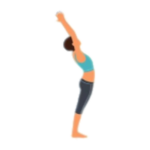Surya Namaskar, or Sun Salutation, holds a place of unparalleled significance among all yogasanas. Rooted deeply in Indian tradition and Sanatana Dharma, this sequence of asanas is not merely an exercise; it is an act of devotion. By bowing to the Sun, the source of all life, we align our body, mind, and soul with the natural rhythm of the universe.
Traditionally, the Sun is regarded as the harbinger of health, vitality, and wisdom. Performing Surya Namaskar is akin to seeking the Sun’s blessings to begin the day with positivity and strength. Beyond its spiritual undertones, it offers a plethora of scientifically-backed benefits. It revitalizes your body, energizes your mind, boosts your enthusiasm, and aids in synthesizing essential Vitamin D, which is crucial for overall health.
It is best advised to perform Surya Namaskar early in the morning, ideally at sunrise. Practicing it while standing in a spot where you can witness the sun’s rays enhances the experience. The gentle morning sunlight is rich in Vitamin D, and when your body absorbs these rays, it offers numerous health benefits. This exposure not only revitalizes your body but also synchronizes your inner rhythm with nature’s energy, setting a positive tone for the day.

Performing Surya Namaskar in this serene ambiance fosters mindfulness, allowing you to focus deeply on the practice and the blessings of the Sun.
While performing Surya Namaskar in a serene ambiance with natural exposure is ideal, it is not a strict necessity. In today’s fast-paced urban life, finding such an environment can be challenging. The beauty of Surya Namaskar lies in its adaptability; you can practice it at your convenience—whether in the comfort of your home, a cozy corner of your apartment, or even your office space.
That said, experiencing the warmth of the sun’s rays or witnessing a sunrise while practicing Surya Namaskar is truly a blessing. The direct exposure to sunlight invigorates your body, enhances Vitamin D absorption, and elevates your mood. However, even without this, the physical, mental, and spiritual benefits of Surya Namaskar remain profound. The key is consistency and mindful practice.
How to Perform the Suryasana
Surya Namaskar (Sun Salutation) is a sequence of yoga poses that flow together in a set pattern. It’s a great way to warm up, improve flexibility, and energize the body.
Here’s how you can perform Surya Namaskar step by step:
1. Pranamasana (Prayer Pose)
- Stand with feet together, arms by your sides.
- Bring your palms together in front of your chest in a prayer position (Anjali Mudra).
- Take a moment to center yourself, breathing deeply.

2. Hastauttanasana (Raised Arms Pose)
- Inhale and raise your arms above your head, arch your back slightly, and stretch your whole body upward.
- Palms facing each other, fingers pointing upward, and stretch your torso upwards.

3. Hastapadasana (Hand to Foot Pose)
- Exhale and bend forward, bringing your palms to the floor beside your feet.
- Keep your legs straight (or slightly bent at the knees if necessary) and try to touch your forehead to your knees.
- If this position is hard for beginners then try simple bending towards floor and touch your toes (Alternative pose)


4. Ashwa Sanchalanasana (Equestrian Pose)
- Inhale and step your right foot back, placing the knee on the floor.
- Keep your left knee bent at a 90-degree angle in front of you.
- Look up, lengthen your spine, and open your chest.

5. Dandasana (Plank Pose)
- Exhale and step your left foot back, bringing your body into a straight line from head to heels (like a plank).
- Engage your core, keeping your arms and body straight.

6. Ashtanga Namaskara (Eight-Limbed Pose)
- Lower your knees, chest, and chin to the floor, keeping the hips elevated.
- The eight points of contact should be your hands, knees, chest, and chin.

7. Bhujangasana (Cobra Pose)
- Inhale and slide your chest forward, lifting it up off the ground.
- Straighten your arms slightly and press your chest upward, arching your back gently.
- Keep your elbows slightly bent and your elbows close to the body.

8. Adho Mukha Svanasana (Downward-Facing Dog)
- Exhale and lift your hips toward the sky, bringing your body into an upside-down V shape.
- Keep your hands shoulder-width apart and feet hip-width apart.
- Press your heels towards the floor and lengthen your spine.

9. Ashwa Sanchalanasana (Equestrian Pose)
- Inhale and step your right foot forward, placing your left knee on the floor.
- Bring your chest up and look forward, lengthening your spine.

10. Hastapadasana (Hand to Foot Pose)
- Exhale and step your left foot forward to meet your right foot, coming back into a forward bend.
- Try to touch your forehead to your knees, keeping your legs straight.

11. Hastauttanasana (Raised Arms Pose)
- Inhale and rise, bringing your arms up and arching your back slightly.
- Stretch your whole body upward.

12. Pranamasana (Prayer Pose)
- Exhale and return to the standing position, bringing your palms together in front of your chest.
- Relax, take a deep breath, and center yourself.
This completes one round of Surya Namaskar. You can perform multiple rounds, starting with 3-5 rounds if you’re a beginner and gradually increasing the number as you become more comfortable.

When to Perform Surya Namaskar
The timing of Surya Namaskar can significantly enhance its benefits, though it remains effective at any time of the day when practiced consistently. Surya Namaskara or Sun Salutation are dedicated to the sun, they can be nice to practice in the morning with sun arise.
Many homes and apartments in the city prefer east-facing orientations to enjoy the luxury of sunrise and ample sunlight. Two key times when Surya Namaskar can be practiced for maximum benefits are during the early morning and at sunset.
1. Early Morning (Sunrise)
- Ideal Time: The best time to perform Surya Namaskar is at sunrise when the atmosphere is calm, the air is fresh, and sunlight is gentle.
- Why?
- Activates your metabolism and energizes your body.
- Prepares you mentally and physically for the day ahead.
- Direct exposure to the first rays of the sun helps in synthesizing Vitamin D and revitalizes your senses.
2. Evening (Sunset)
- Alternate Time: If mornings are not feasible, practicing it at sunset can also be highly beneficial.
- Why?
- Helps release stress accumulated during the day.
- Promotes relaxation and prepares your mind for a peaceful evening.
If you struggle with finding the ideal time, start by dedicating 10–15 minutes whenever your schedule allows. The practice itself will gradually motivate you to align with the optimal timing.
Key Benefits of Surya Namaskar
Physical Benefits:
- Improves Flexibility: Enhances the range of motion in your muscles and joints.
- Boosts Metabolism: Aids digestion and promotes weight loss.
- Strengthens the Core: Tones abdominal muscles and improves posture.
- Improves Heart Health: Boosts circulation and maintains blood pressure.
- Improves your eye strength: Morning sunlight is very beneficial for eyes.
Mental Benefits:
- Reduces Stress: Synchronizing breath with movement calms the mind.
- Enhances Focus: Encourages mindfulness and sharpens concentration.
- Elevates Mood: Releases endorphins, combating anxiety and depression.
Spiritual Benefits:
- Inner Balance: Connects you with the universal energy of the Sun.
- Harmony: Cultivates a sense of gratitude and inner peace.
- Love and appreciation: Love and appreciation toward life.
Gneral Questions:
1: How to do Surya Namskar or Sun Salutation
Click here to check how to do Surya Namaskar or Sun Salutation. Surya Namaskar: The Ultimate Morning Ritual for a Radiant Day
2: Can anybody do the Suryanamskar
Indeed, Surya Namaskar is suitable for individuals of all age groups and can be practiced by anyone.
3: Can small kids do the Suryanamskar
Yes, Kids also should practice it. It is very useful for their early growth.
4: What is best time to perform Suryanamskar
Early morning with sunrise, but if you do not get time in morning try any hour of the day.
5: Is there different ways to Suryanamskar
Yes, there are minor adjustments that can be made in the practice of Surya Namaskar. You can perform it at your own comfort level, but it’s essential to maintain a proper breathing pattern(inhale/exhale) alongside the asanas. The breath plays a crucial role in Surya Namaskar or Sun Salutation.


